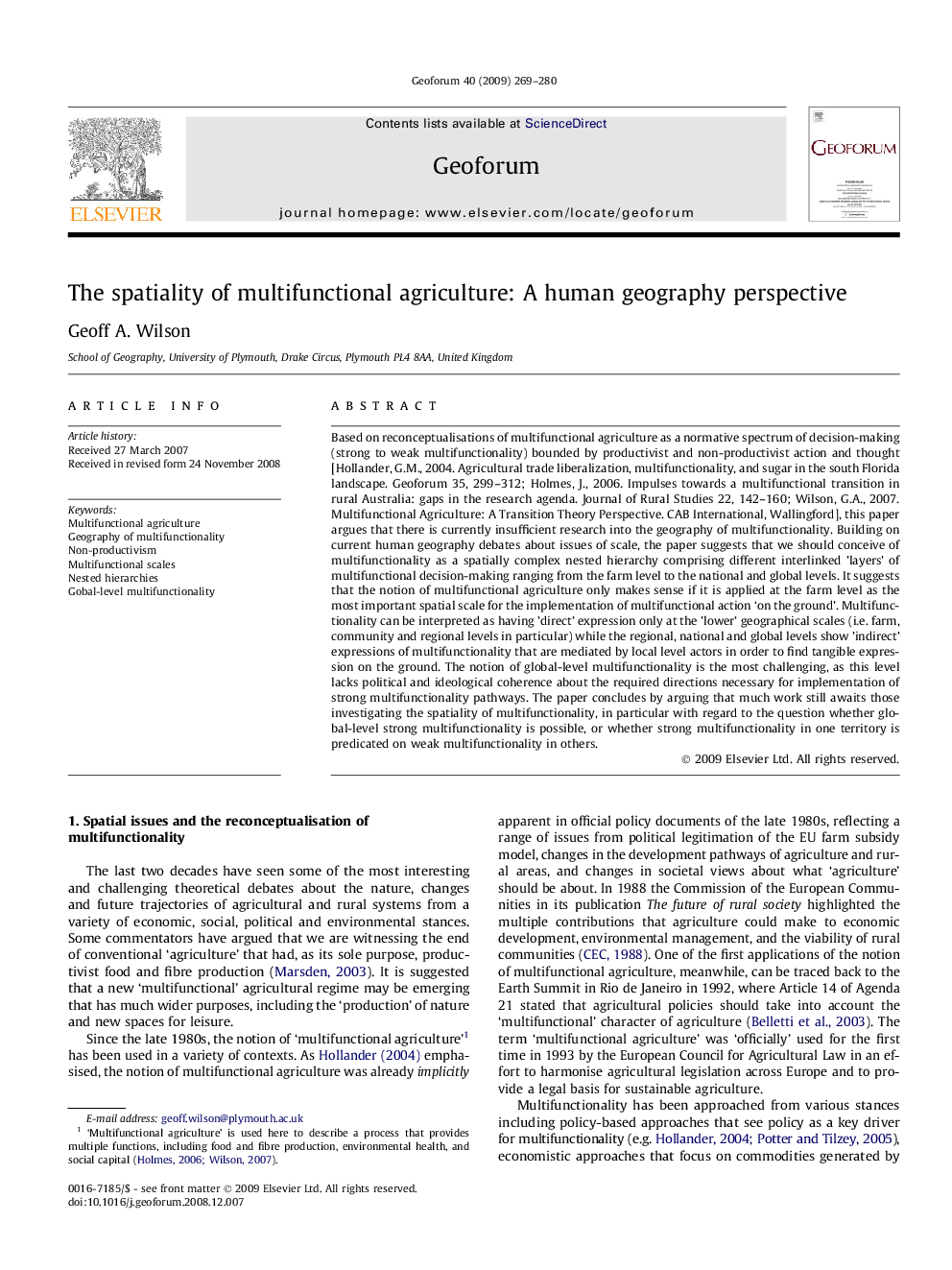| کد مقاله | کد نشریه | سال انتشار | مقاله انگلیسی | نسخه تمام متن |
|---|---|---|---|---|
| 5074734 | 1373713 | 2009 | 12 صفحه PDF | دانلود رایگان |
عنوان انگلیسی مقاله ISI
The spatiality of multifunctional agriculture: A human geography perspective
دانلود مقاله + سفارش ترجمه
دانلود مقاله ISI انگلیسی
رایگان برای ایرانیان
کلمات کلیدی
موضوعات مرتبط
علوم انسانی و اجتماعی
اقتصاد، اقتصادسنجی و امور مالی
اقتصاد و اقتصادسنجی
پیش نمایش صفحه اول مقاله

چکیده انگلیسی
Based on reconceptualisations of multifunctional agriculture as a normative spectrum of decision-making (strong to weak multifunctionality) bounded by productivist and non-productivist action and thought [Hollander, G.M., 2004. Agricultural trade liberalization, multifunctionality, and sugar in the south Florida landscape. Geoforum 35, 299-312; Holmes, J., 2006. Impulses towards a multifunctional transition in rural Australia: gaps in the research agenda. Journal of Rural Studies 22, 142-160; Wilson, G.A., 2007. Multifunctional Agriculture: A Transition Theory Perspective. CAB International, Wallingford], this paper argues that there is currently insufficient research into the geography of multifunctionality. Building on current human geography debates about issues of scale, the paper suggests that we should conceive of multifunctionality as a spatially complex nested hierarchy comprising different interlinked 'layers' of multifunctional decision-making ranging from the farm level to the national and global levels. It suggests that the notion of multifunctional agriculture only makes sense if it is applied at the farm level as the most important spatial scale for the implementation of multifunctional action 'on the ground'. Multifunctionality can be interpreted as having 'direct' expression only at the 'lower' geographical scales (i.e. farm, community and regional levels in particular) while the regional, national and global levels show 'indirect' expressions of multifunctionality that are mediated by local level actors in order to find tangible expression on the ground. The notion of global-level multifunctionality is the most challenging, as this level lacks political and ideological coherence about the required directions necessary for implementation of strong multifunctionality pathways. The paper concludes by arguing that much work still awaits those investigating the spatiality of multifunctionality, in particular with regard to the question whether global-level strong multifunctionality is possible, or whether strong multifunctionality in one territory is predicated on weak multifunctionality in others.
ناشر
Database: Elsevier - ScienceDirect (ساینس دایرکت)
Journal: Geoforum - Volume 40, Issue 2, March 2009, Pages 269-280
Journal: Geoforum - Volume 40, Issue 2, March 2009, Pages 269-280
نویسندگان
Geoff A. Wilson,